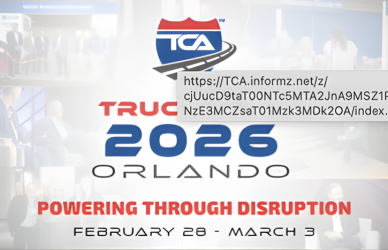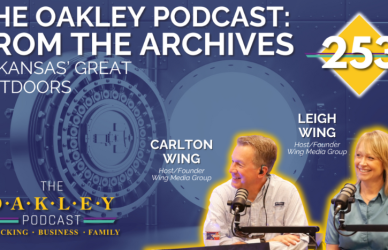In the world of truck fleets, improving fuel economy is a top concern – and rightly so. With fuel being a significant expense, companies are looking for ways to optimize driver performance. After all, it’s in the hands – and foot – of the person behind the wheel.
Many companies are investing in driver training, technology, and incentives in a bid to enhance fuel efficiency. Did you know that driver behavior accounts for as much 30% of miles-per-gallon results? This fact alone underscores the importance of maximizing driver performance.
“The driver has a huge, huge part [in] how much fuel the truck will burn,” said Royal Jones, CEO of Mesilla Valley Transportation.
“In what I would call the perfect truck,” including an electronic governor to limit speed, one driver could get 7 mpg while another driver could get 10 mpg, he added.
New drivers can achieve impressive miles-per-gallon results with proper training and equipment. A driver-instructor from Nussbaum Transportation in Hudson, Ill. shared that during training, an apprentice driver was able to register an impressive 9.94 mpg.
“He’s under 21,” Reed said, noting that the newcomer is participating in the Federal Motor Carrier Safety Administration’s registered apprenticeship program that allows training of younger people to operate trucks across state lines.
How did this apprentice driver achieve 9.94 mpg?
“First, it’s equipment,” Reed said. “You’ve got to have the right equipment to get that done, and Nussbaum’s really good at spec’ing equipment for fuel economy.”
Expert drivers recommend key techniques for optimal driver performance, such as light pedal usage, maintaining safe following distance, and smooth vehicle operation. Despite the benefits of automated transmissions and cruise control, however, the driver remains a crucial factor in fuel-efficient driving.
To enhance driver performance, some fleets appoint their best drivers as trainers and deploy technology like telematics systems for immediate feedback on fuel efficiency. In conjunction with real-time feedback, these training programs reinforce efficient driving habits and promote safe, fuel-efficient driving.
“It’s giving you a chance to learn as you go, and get better, said Dave Schaller, industry engagement director for the North American Council for Freight Efficiency.
Tucker Freight Lines has been utilizing Isaac Coach, a powerful in-cab coaching application provided by Isaac Instruments for over a year now. This Dubuque, Iowa-based carrier, manages a fleet of 270 tractors and 950 trailers, including dry vans and flatbeds.
According to Cody McClain, Tucker’s Vice President of Safety and Human Resources, the company sees acceleration as the best opportunity to enhance driver performance.
“It’s habit to pin it to the floor to try to get out into a lane [from] an on-ramp,” McClain said.
He also noted that the system encourages drivers to accelerate gradually while also flagging instances of rough braking and turning.
“Everyone doesn’t always associate that with fuel economy, but if you’re braking harshly quickly, you’ve got to get back up to speed,” McClain said.
Isaac Coach levels the playing field for evaluating driver performance by removing uncontrollable factors from the equation. As explained by Jean-Sebastien Bouchard, Isaac Instruments’ co-founder and EVP of sales, the system is designed to ensure fairness and accuracy.
“To judge a driver’s fuel efficiency on just the miles per gallon is super hard because he controls just a fraction of it,” Bouchard said. The truck, the load, the terrain and weather all influence mpg.
Isaac Coach has a nifty solution for truck drivers to improve their fuel efficiency and tackle resistance on the road. With a color-coded indicator on an in-cab tablet, drivers can easily gauge how much pedal pressure is needed to overcome obstacles like heavy loads, strong winds, and steep hills. The aim is for drivers to adhere to the color-coded cues 95% of the time, which has resulted in up to a 5% boost in fuel efficiency based on user reports.
Telematics systems are applauded for providing valuable information to improve driver training, according to trucking executives and vendors. However, given drivers’ busy schedules, feedback has to be clear and concise to be truly useful. This is where Daryl Bear, chief operating officer and lead engineer at MVT Solutions, comes in. With a focus on fuel efficiency consulting, Bear emphasizes the importance of giving drivers feedback in an easily understandable format, whether it’s related to aggressive driving, braking, cruise control time, or idle time.
Overall, the trucking industry is keen on innovative solutions that help drivers navigate the roads more efficiently while reducing fuel costs.
“It’s more fuel-efficient than an average driver, but it’s not necessarily more fuel-efficient than a good driver,” Bear said.
Fleets can use data to help them score and coach drivers, he added, “but, of course, that takes time and some expertise to do.”
In March, Platform Science, a telematics provider, announced that Maverick Transportation will be implementing their advanced technology solutions. These solutions include driver-centric apps that will be deployed through the fleet management system. Stay tuned for the optimized and user-friendly experience that this partnership will provide to Maverick Transportation.
“We have a driver performance scorecard as part of our solution,” said Luke Wachtel, senior vice president of transportation and logistics for Platform Science.
Carriers using the vendor’s open platform can now promote fuel-efficient driving through their own gamification apps, according to Wachtel. Additionally, Maverick can now expand the use of its Drive Maverick app thanks to the platform.
Trimble has integrated its fleet management system with Tenstreet’s True Fuel technology, which offers real-time, in-cab coaching combined with fuel-efficiency data. Gary Falldin, Senior Director of Industry Solutions for Trimble, believes that real-time coaching followed by reports on mpg and driver efficiency is a better approach to fuel efficiency than just looking at mpg.
True Fuel, as an over-the-air add-on to Trimble telematics, provides reporting on driver fuel efficiency and can discount inequities when comparing equipment operating in different conditions. Falldin notes that potential mpg is vital in determining true fuel efficiency, as drivers with the same equipment can have different fuel efficiency levels. True Fuel can help drivers identify areas of improvement to maximize fuel efficiency.
“You can’t just look at mpg,” Falldin said. “Especially if you’ve got a bonus system for drivers.”
True Fuel offers a score that takes into account driving and equipment variations, allowing drivers to measure their fuel efficiency based on what’s within their control. Tim Crawford, CEO of Tenstreet, explains that it’s essential for drivers to understand the benefits of in-cab coaching to maximize the effectiveness of the program.
“There are so many demands on the driver’s attention,” Crawford said, citing safety, tight schedules and complying with regulations. “Why do they need to spend attention on this one topic?”
True Fuel now offers a built-in rewards system that simplifies the process of tracking and rewarding a driver’s fuel efficiency. By incorporating this feature, carriers can avoid the hassle of administrative responsibilities and easily incentivize their drivers.
“It’s hard to administer a program,” he said. Tenstreet’s Rewards platform enables fuel-efficient drivers to redeem points for electronics, home goods, movies and tools.
Slowing down while driving can help you save on fuel, but it can also translate into fewer miles covered and lower pay for drivers who get paid by the mile.
Mesilla Valley offers an incentive to make it worth your while – a $25,000 prize for the driver or team that achieves the best mpg each year.
To qualify for the award, you must have a clean record and meet a minimum mileage requirement for the year. It’s a win-win situation for drivers who want better fuel efficiency and a chance to earn more on the road.
Each quarter, the company gives away a new car. “But you can only win the car once,” Jones said.
Mesilla Valley Transportation has been encouraging eco-friendly driving for 10 years by offering monthly per-mile bonuses to drivers who beat the fleet’s average miles per gallon (mpg). The bonuses begin at one penny per mile and increase to a maximum of 4 cents per mile, depending on how much a driver surpasses the fleet’s mpg average.
In addition to the financial incentive, Mesilla Valley Transportation has handed out 30 motorcycles and 42 cars over the years as rewards for drivers who consistently meet or exceed their mpg goals.
Incentives work, and “they keep people trying,” Jones said.
Bear said that if a driver achieves a specified level of fuel economy, Mesilla Valley Transportation “allows the truck to go faster, which sounds counterintuitive, but [the opportunity] to go faster is an incentive for the driver because they can do more miles,” Bear said. “But we don’t see a lot of fleets doing that. It takes a lot to manage it.”
According to McClain, Tucker Freight Lines is currently putting the finishing touches on an incentive program based on drivers’ Isaac Coach scores. “If we see the value in them having the higher score, we want to incentivize them to get more pay,” he said.
Did you know that prioritizing fuel efficiency can lead to more than just savings on gas money? According to carriers and industry experts, it can also lead to increased safety and reduced overall costs.
“When you’re getting better fuel mileage, you’re not working the motor as hard,” Mesilla Valley’s Jones observed. “When a guy drives smooth and easy to get fuel mileage, he or she also wrecks less, the tires last longer, the brakes last longer, the whole truck lasts longer. I always tell people, ‘If you drive a truck like it’s about to break, it never will.’”
Source: Transport Topics











